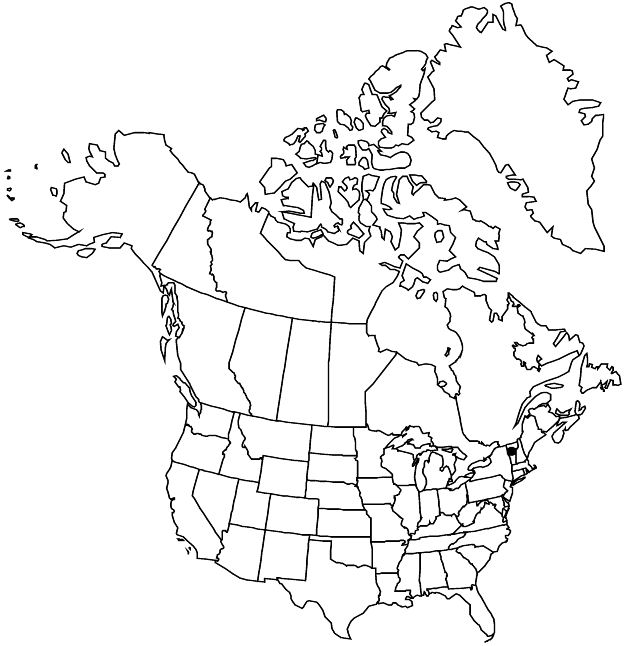Rosa sherardii
Welsh Botanol., 49. 1813.
Shrubs, erect, forming small thickets; rhizomatous or not. Stems erect, glaucous, stout, 10–20 dm; distal branches often flexuous, bark reddish, ± pruinose or glaucous; infrastipular prickles single or paired, curved or erect, 6–9 × 3–4 mm, lengths ± uniform, internodal prickles sometimes present, aciculi absent. Leaves deciduous, 6–10(–18) cm; stipules 10–14 × 3–5 mm, auricles 3–4 mm, margins short stipitate-glandular, surfaces usually glabrous, sometimes pubescent, glandular; petiole and rachis with pricklets, pubescent, glandular; leaflets 5–7, terminal: petiolule 6–12(–40) mm, blade ovate to narrowly or broadly elliptic, 30–45(–65) × 15–30(–45) mm, base rounded, sometimes slightly cuneate, margins 2- or multi-serrate, teeth 17–26 per side, apex acute or rounded, abaxial surfaces light green, ± rugose, tomentose, densely resinous-glandular, glands reddish brown, resin-scented, adaxial green, dull, tomentulose or glabrous, eglandular. Inflorescences panicles, 1–3(or 4)-flowered. Pedicels erect to reflexed as hips mature, 12–17 mm, sparsely stipitate-glandular; bracts 2, ovate-lanceolate, 16–21 × 4–6 mm, margins glandular, surfaces tomentose to puberulent or glabrous, glandular or eglandular. Flowers 2.5–3.5 cm diam.; hypanthium globose, 5–6 × 5 mm, eglandular or sparsely stipitate-glandular, neck absent; sepals spreading to erect, lanceolate, 15–20 × 3–3.5 mm, margins sometimes pinnatifid, tip 4–8 × 1.5–2 mm, abaxially densely stipitate-glandular; petals deep rose pink, rarely white, 15–19 × 13–15 mm; carpels 52, styles lanate or villous, exsert 1–2 mm beyond stylar orifice (2.5 mm diam.) of hypanthial disc (4.3 mm diam.). Hips orange to bright red, globose or obovoid to ellipsoid, 13–18 × 11–18 mm, glabrous, sparsely stipitate-glandular; sepals persistent, usually spreading-erect. Achenes 40, tan, 5–5.5 × 2.5–3 mm. 2n = 28, 35, 42.
Phenology: Flowering Jun–Jul.
Habitat: Thickets of woodland margins, overgrown pastures, open scrub, wastelands, roadsides
Elevation: 300–400 m
Distribution

Introduced; Vt., Europe.
Discussion
Known from northeastern Vermont, Rosa sherardii, a Scottish introduction in the nineteenth century, is an erect, compact shrub often forming rhizomatous thickets. Sepals are spreading to erect and persistent after anthesis, auricles are 3–4 mm, bracts 16–21 mm, and stylar orifices 2.5 mm diam.
Rosa sherardii occurs frequently in northern England and Scotland, as does the closely allied R. mollis. Rosa sherardii and, undoubtedly, R. mollis, both recently identified in the flora area by A. V. Gilman, were brought to Vermont by Scottish immigrants who settled and farmed there (Gilman 2012).